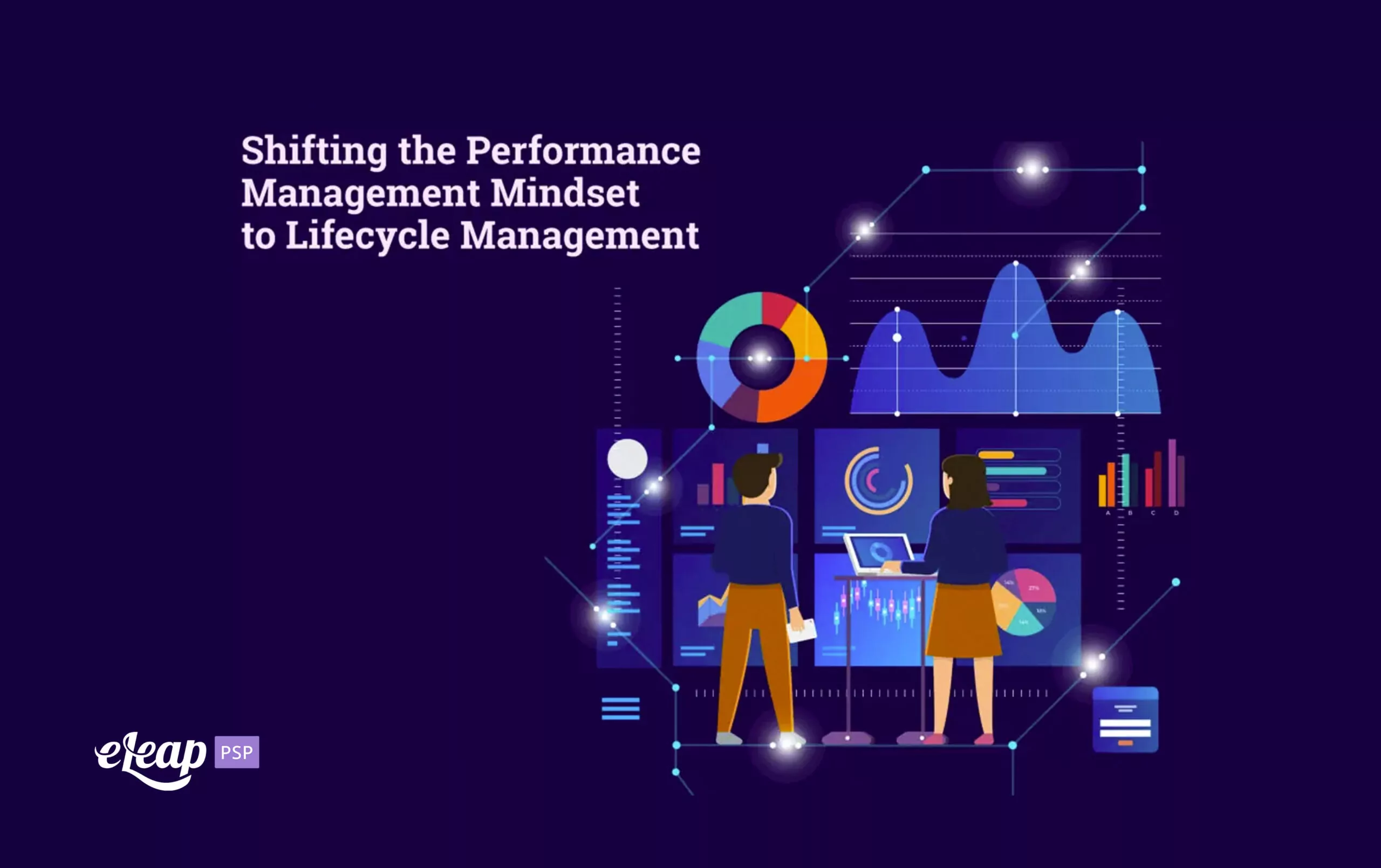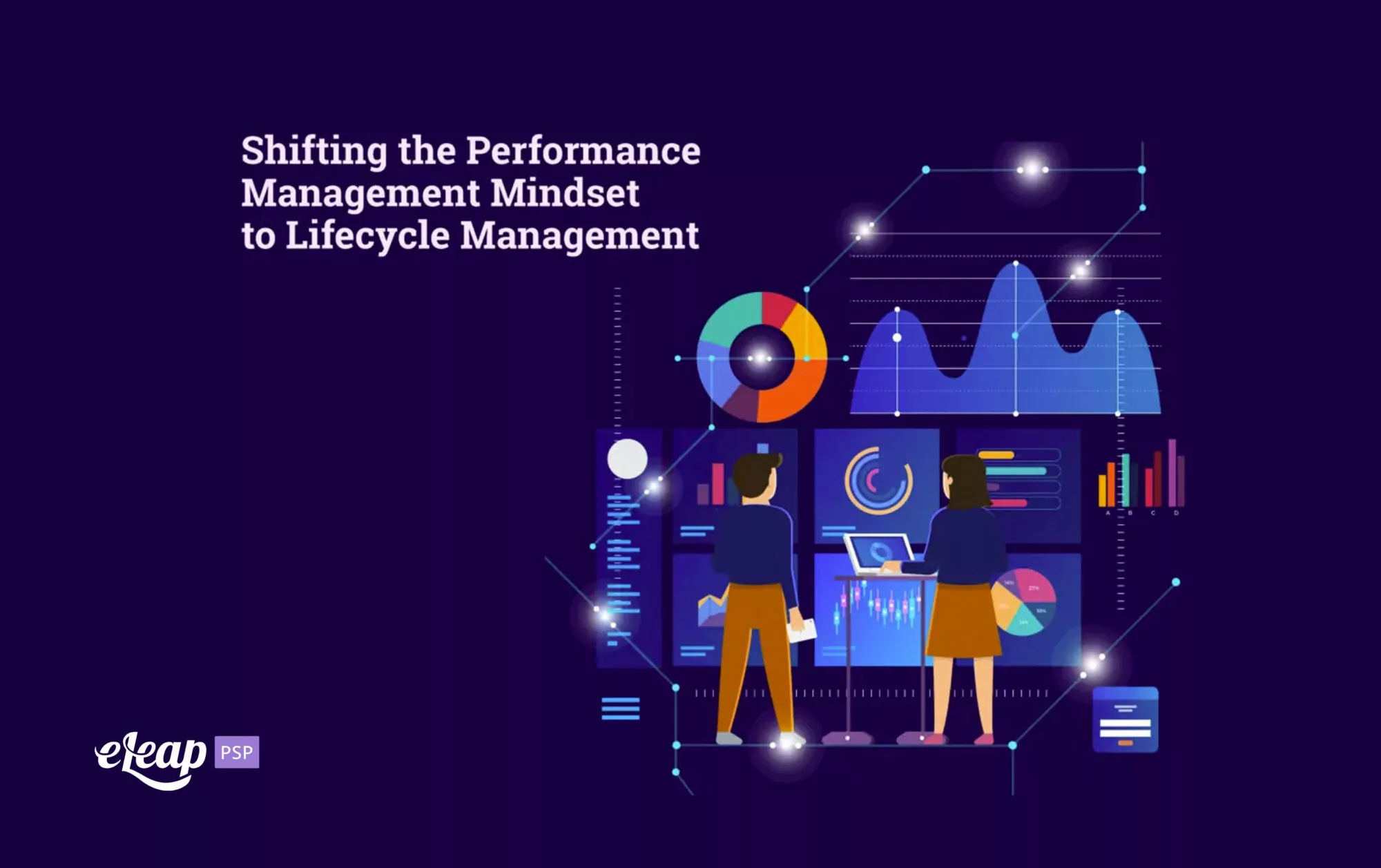Shifting the Performance Management Mindset to Lifecycle Management

As a leader, you must have the right mindset to manage employees. Traditionally, that has been a performance management mindset – the focus on improving and then maintaining performance over time. However, while performance is one of the more important elements, it is just one of many.

Increasingly, it is becoming important for management to understand this distinction and to look at performance management as just one more part of lifecycle management. Performance management can play a role at every single stage within an employee’s lifecycle, but it is important to understand how and where it fits.
What Is the Employee Lifecycle?
There are six stages within the employee lifecycle:
- Attraction
- Recruitment
- Onboarding
- Development
- Retention
- Separation
It should be noted that separation may or may not be a step in all lifecycles. It depends on the employee, the company, the employee’s goals, and when they come to the employer during their lives. For instance, a Baby Boomer is likely to have only a few employers in their life, while Millennials tend to jump ship every three to five years. Older Millennials, though, may ultimately stay with their most recent employer so long as they are engaged and find their employment both professionally and personally rewarding.
Where Does Performance Management Fit In?
Looking at the six stages listed above, it’s challenging to identify when and where performance management has a role to play. The truth is that it can slot in within most of those stages. Here’s a quick look at how that might work in some instances:
- Attraction: Make clear in job listings and other talent attraction materials what’s expected in the role, who reports to whom, and other critical elements.
- Recruitment: Use the recruitment process to discuss performance expectations with candidates and get a feel for their performance in past roles with previous employers.
- Onboarding: This is the most crucial part for performance management. Use the onboarding process as a chance to get new hires acquainted with the team, their role and responsibilities, and how their efforts support the business as a whole. Onboarding is more than just an introductory period – it is your chance to create engagement and commitment from the very beginning.
- Development: Development is not a once-and-done thing. It runs in tandem with retention, and organizations that focus on employee development actually have stronger retention numbers. Use this period to coach and develop, to identify skills gaps and close them, and to help employees develop not just professionally, but also personally.
- Retention: The longest of the six stages, retention can last for years, even decades in some cases. Employees who feel supported in their development are more likely to remain with employers for longer, and they’re more likely to be high performers, delivering increased value over their entire lifecycle.
However, the final stage of the lifecycle (separation) will eventually come. If you’ve done your job as a manager, it will not be for a long time yet, though. In fact, performance management can be instrumental in extending an employee’s lifecycle as long as possible.
Show How Their Work Contributes
We touched on this previously, but it bears further scrutiny. One of the most powerful drivers of performance is not some extrinsic incentive, but an intrinsic understanding and feeling of being valued, of being integral to the organization. To help develop that understanding and improve performance, it is necessary to make sure your employees know how their efforts contribute to the organization’s success. Help them connect the dots in a real, meaningful way.
Improve Accountability
No amount of performance management will do any good if employees feel that there is a lack of accountability with other team members or managers. If someone “always passes the buck” and is never held accountable for their actions or decisions, then it reduces morale across the board. Use one-on-ones and check-ins as an opportunity to identify accountability issues through employee feedback and then address those problems within the organization, even if it means getting higher-ups involved in the process. With greater accountability comes a sense of improved trust and acceptance – employees become more engaged and performance improves naturally.
Work on What Matters Most
As a manager, you are uniquely positioned to help improve not just performance, but overall efficiency and employee retention. During your check-ins and one-on-ones, find out what matters most to your employees. Solicit candid feedback from your team members – ask them what one thing they would change about the organization if they could. Give them free rein here, too. Then, act on those suggestions. If it matters to your employees, it should matter to you. When team members see that you are willing to “go to the mat” for what matters to them, they become exponentially more engaged, and performance increases. It also helps reduce churn and increases retention.
Help Them Develop
Again, we touched on development above, but it is so important we are going to explore it in greater depth. Few things improve engagement more than realizing that the company feels you are worth investing in through development programs. That automatically improves performance. However, when employees learn new skills and master new knowledge, performance and efficiency jump again, and continue to do so with each new skill or knowledge area completed.
It’s a Holistic Thing
Ultimately, there is no separation between performance management and lifecycle management. They are part of each other. You cannot have one without its counterpart. The first step to changing the paradigm is understanding this interconnectedness. The next is finding ways to work performance management into each of the lifecycle stages within your organization. With time, dedication, and a little creativity, you can find ways to address performance-related concerns at every point, from talent attraction and recruitment through onboarding, development, and retention.
It’s really all about creating a great employee experience, showing them that they matter and that their efforts make a tangible difference, and helping them become the best they can be.